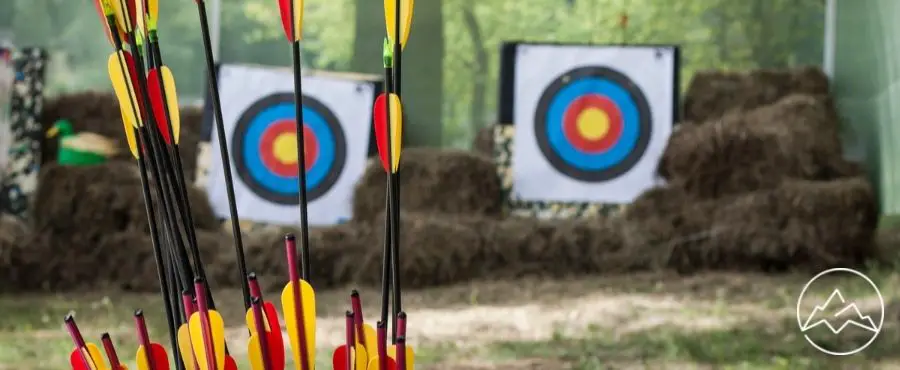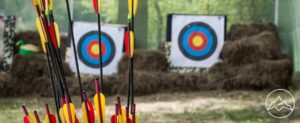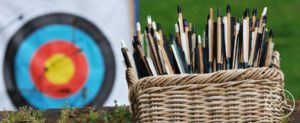Archery is a skillful and ancient sport that requires precision, focus, and technique. To enhance these qualities, choosing the right archery target is of utmost importance. Did you know that selecting the appropriate target can significantly impact an archer’s skill development? In fact, studies show that using the right target can improve accuracy and overall performance by up to 30%. With so many options available, it is essential to have a comprehensive guide to assist in making the best choice.
This article aims to provide a detailed analysis of the factors to consider when selecting an archery target. It will explore the various types of targets, including paper, bag, block, and 3D targets, and highlight their advantages and disadvantages. Additionally, this guide will delve into important considerations such as shooting style, shooting environment, bow type, arrow draw weight, shooting frequency, and target durability. By the end, readers will have a clear understanding of how to choose the ideal archery target that aligns with their specific needs and goals.
Key Takeaways
- Factors to consider in choosing the right archery target include shooting style, indoor or outdoor shooting, preferred distance, type of bow, draw weight, frequency of shooting, and target shooting or hunting.
- Different types of archery targets available nowadays include paper targets, bag targets, block targets, and 3D targets.
- The choice of target depends on factors such as personal shooting style, visibility, contrasting colors, type of bow, type of arrows, shooting distance, shooting location, target durability, and budget.
- Beginner archers should choose a large target that is easy to see, while foam/dense targets are better for heavier poundage bows.
Types of Targets
There are various types of archery targets, including paper targets, bag targets, block targets, and 3D targets, which offer different features and benefits to cater to the diverse needs of archers. Paper targets are commonly used for indoor shooting and are inexpensive, lightweight, and easily replaceable. Bag targets, on the other hand, are filled with cotton and/or foam scraps and are portable and lightweight, but not recommended for young or recurve archers. Block targets are made of foam, cardboard, and other materials, offering affordability and durability, but may develop weakness from repeated impact. Finally, 3D targets are shaped like real animals and are made of 3D foam, allowing archers to practice hunting scenarios, but can wear out with repetition and may result in lost arrows. Each type of target material has its own pros and cons, and archers should consider their shooting style, shooting location, and budget when choosing the right archery target.
Factors to Consider
One important factor to consider when selecting an appropriate target for archery is the shooting style, as different targets may be better suited for specific shooting styles. For instance, target shooting, which focuses on accuracy and precision, may require a different type of target compared to hunting, which involves shooting at moving targets in realistic scenarios. The type of bow being used is also a crucial consideration. Compound bows, for example, generate a higher draw weight and shoot arrows at higher velocities, necessitating a target that can withstand the impact. On the other hand, recurve bows have lower draw weights and shoot at slower speeds, allowing for a wider range of targets to choose from. Therefore, understanding one’s shooting style and the type of bow being used is essential in selecting the right archery target.
Choosing the Right Target
When making a decision on which archery target to select, it is crucial to carefully consider various factors such as shooting style, bow type, and intended use in order to hit the bull’s-eye in your quest for improved accuracy and skill. Target selection criteria encompass a range of aspects including visibility, contrasting colors, shooting distance, shooting location, target durability, and budget. Target options can be compared based on the type of target, materials used, and price. Paper targets are commonly used for indoor shooting and are affordable, while bag targets are portable and lightweight, making them ideal for practice sessions. Block targets are known for their durability and can handle repeated impacts, whereas 3D targets provide a realistic hunting experience. Ultimately, the right archery target will depend on individual preferences and requirements, as well as the specific shooting goals one aims to achieve.
Frequently Asked Questions
Are there any specific targets that are recommended for beginners?
Beginner friendly targets for novice archers include large paper targets with clear and contrasting colors, as they are easy to see and provide a clear visual reference. Layered targets made from foam, cardboard, and other materials are also suitable, as they are affordable and can withstand repeated impacts. Additionally, foam block targets made of high-density foam are recommended for beginners with heavier poundage bows, as they are durable and weather-resistant. It is important for beginners to choose targets that are easy to use and promote skill development.
What are the advantages and disadvantages of using 3D targets?
3D targets have several advantages. Firstly, they provide a more realistic shooting experience as they are shaped like real animals. This helps archers practice their aim and accuracy for hunting. Secondly, 3D targets can handle broadheads, allowing archers to practice with their hunting arrows. However, there are some disadvantages. 3D targets tend to wear out with repeated use, and arrows can be lost if the target is missed. Additionally, 3D targets are more expensive compared to other types of targets. When selecting a 3D target, consider the animal shape, size, and material to ensure it meets your specific needs.
How can I ensure that my target is suitable for outdoor use?
To ensure that your archery target is suitable for outdoor use, there are several factors to consider. Firstly, choose a target made of high-quality materials that are weather-resistant. Look for targets specifically designed for outdoor environments, as they will be more durable and able to withstand the elements. Secondly, consider the size and material of the target. Opt for a larger target that is easy to see from a distance, and choose a material that can handle repeated impact without deteriorating quickly.
Is it necessary to consider the type of arrows I use when choosing an archery target?
When choosing an archery target, it is indeed necessary to consider the type of arrows you use. The weight and speed of your arrows can greatly impact the durability and effectiveness of the target. Heavier arrows with greater speed may require a target made of high-density foam or other dense materials to withstand the impact. Lighter arrows may not penetrate a dense target effectively, requiring a target with softer materials. Considering arrow weight and speed is crucial in selecting a suitable archery target for optimal performance and longevity.
Can you provide any tips for maintaining and prolonging the lifespan of an archery target?
Proper storage, regular inspection, and repair are essential for maintaining and prolonging the lifespan of an archery target. When not in use, the target should be stored in a dry and cool place to prevent damage from moisture and extreme temperatures. Regularly inspecting the target for any signs of wear or damage is crucial, as it allows for timely repair or replacement of worn-out parts. Additionally, following the manufacturer’s guidelines for maintenance and repair can further extend the target’s lifespan.
Conclusion
In conclusion, selecting the appropriate archery target is a critical decision for archers seeking to enhance their skills and accuracy. By considering various factors such as shooting style, shooting environment, bow type, and budget, archers can make an informed choice. The different types of targets available, such as paper targets, bag targets, block targets, and 3D targets, each have their advantages and disadvantages. Additionally, visibility, contrasting colors, and target durability are vital considerations. By joining the archery community, archers can access additional resources and support to further improve their abilities. Choose wisely, hone your skills, and hit the bullseye with precision.












